July 2025 M T W T F S S 1 2 3 4 5 6 7 8 9 10 11 12 13 14 15 16 17 18 19 20 21 22 23 24 25 26 27 28 29 30 31 -
Recent Posts
[05.04] Celebrate Learning Week
Woo! Learning
During Celebrate Learning Week (May 2 – May 8), I had the opportunity to participate in various workshops and presentations as well as the keynote presentation by Dr. Roddy Roediger.
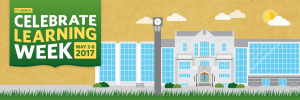
Courtesy of CTLT, UBC
I started my sessions off with a Grad student presentation on Universal Design for Learning. It was interesting how they chose to lead the class through the lens of diversity, which really put everyone in a framework for investigating their own practice. I enjoyed the opportunity to interact with instructors from all over campus, and other educators from different backgrounds.
Dr. Roddy Roediger’s work on retrieval practice was very interesting, as it challenged many preconceptions on students’ preparations for assessment or “studying”. His message really made me think of “study smart, not hard”. What I saw was the value of teaching meta-cognitive skills in the classroom, and how important it is to teach students how to study. I looked back at my own practice, and I can definitely see where I can introduce more guidance when it comes to studying. I’ve always modeled a practice -> self assessment approach to studying in class (providing extra resources, questions, guiding questions, checklists), but have not created opportunities to teach studying. I have had students think “If I study hard for this test, I can get an A”, so the desire is there. Going forward, as I already have a “get to know you” sheet at the start of the year (to assess the diversity of learners in my classroom), I would like to add a “how do you study” question so that I can help students target and understand how they learn.
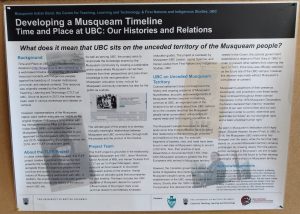 Picture by John Lim, used with permission
Picture by John Lim, used with permission
Following the Keynote, I had the opportunity to visit the TLEF (Teaching and Learning Enhancement Fund) projects poster showcase. It was very rewarding to interact and learn from the many of the various projects on campus. I really enjoyed Developing a Musqueam Timeline, and Transforming written lab protocols into online videos, among the many presentations on site.
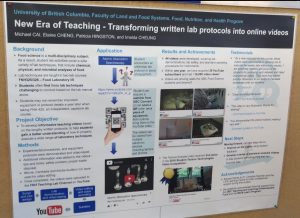 Picture by John Lim, used with permission
Picture by John Lim, used with permission
Posted in Uncategorized
[05.05] Visit to UBC Studios and the Emerging Media Lab
Today I ventured to UBC studios to explore the various production technologies available to instructors and students. It was a short tour, but it was very interesting to see how accessible UBC studios has made the use of its facilities.

Taken by John Lim
The technologies I got to try were the one-button studio, Lightboard, and the VR studio. Thank you to Felicia for arranging for this tour!
In addition to the well established VR equipment sitting in UBC studios, it was exciting to see that within a separate entity: The emerging media lab, sat another virtual reality unit. As a unit, ETS got a chance to observe a few demos, and even try a few games. I was very interested in the fact that the computer was so small, with an external power supply (I’m a computer nerd). I wonder how much it all cost?

Taken by John Lim
A lot going on campus had to do with Augmented/Virtual Reality, and many questions are raised as to how it enables, complements, and transforms teaching in a classroom setting. At the AR/VR workshop for Celebrate Learning 2017, I presented some apps that were available to the public for free to provoke thought in educators across campus. I felt that when considering the use of “technology”, it is best used in a way that transforms what you are teaching. Technology nowadays isn’t simply a tool that “makes things easier” or “makes it more fun”. It has the power to deliver material in a unique way that develops understanding, or provides experiences that may have never been possible before.
Posted in Uncategorized
[05.02] Back in the Classroom: reflections
Physiological Reaction to teaching
I must confess that working with me can sometimes be less than pleasant. All last week, I’ve been experiencing seasonal allergies!
However! More importantly:
It’s a profound moment when we as educators are reminded that we aren’t just chosen to teach – we’re usually born into it. Today was the day that the students from Hastings Elementary would come visit to experience the Ozobots, and I was worried that I wouldn’t be in a condition to teach. Interestingly, as soon as the students came in, my symptoms were gone and I was filled with energy!
https://www.instagram.com/p/BTmcY8ujrgN/
The students were very well behaved, and seemed to be engaged and enjoyed the experience. I was overjoyed to be back in the classroom again, and it was interesting that both my body and my mind reacted so strongly to simply just by being in a classroom setting.
Posted in Uncategorized
[05.01] Teaching Ozobots
Robotics and Coding
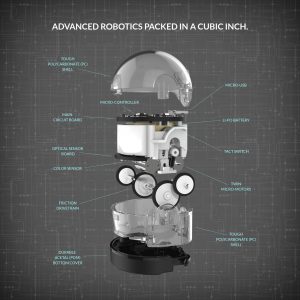
Within the new BC curriculum, Applied Design, Skills and Technologies is a section in the elementary/middle years that focuses on the design, creation, and utilization of various technologies in the world. My role in this project is to plan a lesson for Grade 7 around the use of OZOBOTS – highly compact devices tht are often used to integrate coding, robotics components and problem solving skills into the classroom. Ozobots use light, sound, motors, proximity sensors and optical sensors to communicate and interact with the environment.

A lot of the prep that I had done for this lesson includes testing and familiarizing with the technology. Organizing these resources were a priority for me, as I believe that this investment should be maintained in good condition for many classes to come.
Using pre-programmed code to explore the specific and directional nature of coding, students are able to grow in their understanding of input and output.
Ozobots also have remote-control functionality, and block-code program-ability through Ozoblockly.com.
Posted in Uncategorized
[04.26] The Spark ECE Conference
Full speed ahead!
Having experienced the first two days. I now have a better idea of the projects that I’ll be a part of over the course of my CFE. I am finding that organization and keeping an eye on the clock is essential to staying on time and keeping my commitments. So far, I have been pretty good at this.
Immediately on the horizon is a meeting with Wendy, the TLEF administration and technology support staff. We consulted with a graduate student who was part of the Spark Early Childhood Development conference planning committee who had a very specific set of needs for the conference.
We were tasked to create collaborative and sharing spaces on Padlet.com for delegates to document their experiences throughout the conference, as well as to offer feedback over the two days. In addition to supporting the use of padlets, we created a handout for delegates to keep in order to access these walls.
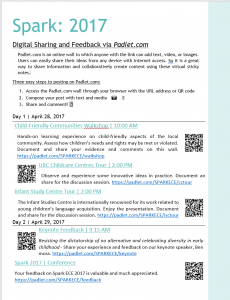
In addition to finishing a product that was accessible and functional to learners, I worked collaboratively with another staff member to complete these deliverables. I got to experience how the creative process can address real needs in education through the use of technology. I thought a lot about what the conference organizers would feel comfortable handing out, and what they would be happy with.
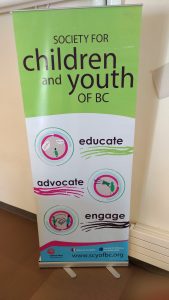
Posted in Uncategorized
[04.24] Completion of the Practicum; Welcome to the CFE!
A Change of Setting
As my time at Burnaby Central Secondary comes to a close: and the last of student reports and comments are being sent out. I prepare for my Community Field Experience (CFE) by packing my laptop, lunch, coffee, and snacks.
My CFE is at the Education Technology Support (ETS) department at UBC, and I was excited to start my next three weeks.

At the ETS, we discussed my role, current projects, and I got to share a bit of what I enjoyed about teaching and the practicum. A great thank you to Natasha, Sharon, Yvonne, Ian, and Felicia for helping me get settled today!
It’s interesting that after the first few hours, I realized how well my experiences related to the ongoing projects. I was tasked to visualize a passion-project, that I would be able to create and share as a product of my experience. I was excited to learn that there would be multiple conferences and events that I would be able to take a part of!
I quickly realized that I would have to organize my own time free from a bell-bound time-table. Thankfully a schedule of events and contacts had been prepared for me to help keep track of items!
Posted in Uncategorized